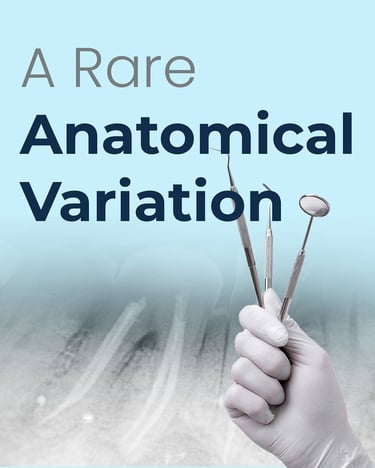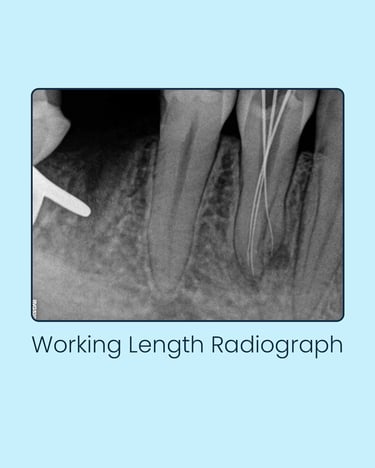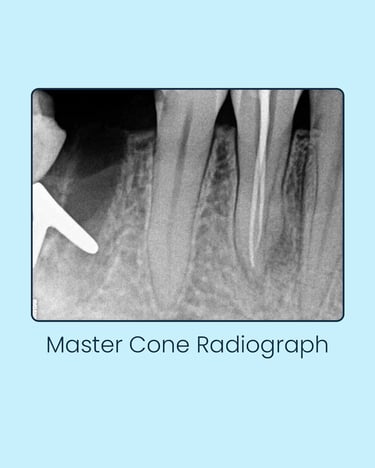Case Study: A Rare Anatomical Variation in Endodontics
A Rare Anatomical Variation
Mandibular premolars are known for their anatomical surprises — and this case was a classic example.
A 34-year-old female patient presented with a 10-day history of pain while chewing in the lower right posterior region. She had no relevant medical history.
Clinical examination revealed tooth #45 was tender to percussion, with no mobility or periodontal involvement. Thermal and electric pulp testing confirmed symptomatic irreversible pulpitis.
Initial radiographs hinted at root bifurcation and a periapical lesion. To investigate further, CBCT imaging was done, which confirmed an uncommon finding: two roots and three canals — 2 buccal, 1 lingual.
Diagnosis
• Pulpal: Symptomatic irreversible pulpitis
• Periapical: Symptomatic apical periodontitis
Treatment Plan
Nonsurgical root canal treatment of tooth #45.
Procedure (Step-by-Step)
Anesthesia & Isolation:
• 2% lidocaine with 1:80,000 epinephrine
• rubber dam applied
Access Preparation:
Oval access cavity prepared
• Working Length: Determined using apex locator and confirmed radiographically
Cleaning & Shaping:
• Rotary NiTi files: Coltene HyFlex CM
• Irrigation protocol: 3% NaOCl and 17% EDTA
Obturation:
• Warm vertical compaction technique
• Gutta-percha + AH Plus sealer
Restoration:
• Access sealed with composite
• Full-coverage crown advised
Mandibular premolars typically have a single root and canal, but this case serves as a reminder: always be suspicious of hidden anatomy. Without CBCT and magnification, the additional buccal canal could have easily been missed.
Successful outcomes in such cases depend on:
• Careful radiographic interpretation
• Use of advanced imaging when needed
• Understanding the full range of anatomical variations
Recognizing and managing unusual root canal anatomy is key to long-term endodontic success. This case reinforced the value of combining clinical judgment with modern diagnostic tools.










